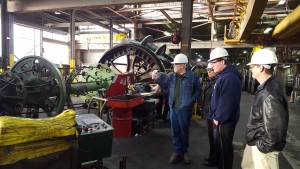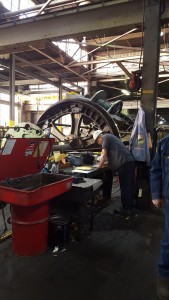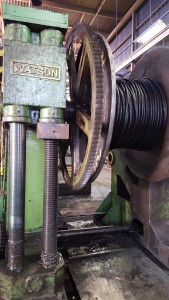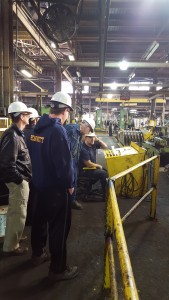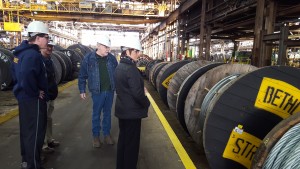Commerce Secretary Submits Annual Report and Strategic Plan for First Manufacturing Institutes
(Department of Commerce Press Release – Office of Public Affairs: 2-19-16) U.S. Secretary of Commerce Penny Pritzker has submitted to Congress the first legislative reports required of the National Network for Manufacturing Innovation (NNMI). The NNMI Annual Report highlights the program’s initial success in spurring private-sector investment to support the development of manufacturing processes based on U.S. innovations.
Secretary Pritzker also submitted a Strategic Plan that describes the program’s goals for the next three years and how its performance will be measured.
“With the support of more than 800 members – including blue chip companies, leading universities, and numerous small businesses and non-profits – the institutes are undertaking applied research in support of solutions to industry-relevant problems, strengthening the skills of America’s workforce, and securing U.S. leadership in emerging manufacturing technologies,” said Secretary Pritzker. “I am excited to celebrate the success of the President’s vision for a National Network for Manufacturing Innovation, and the Department of Commerce’s role in supporting and growing the NNMI program.”
The NNMI is an interagency, public-private partnership initiative aimed at bridging the gap between invention and commercialization. Its regional manufacturing innovation institutes work individually and together to strengthen the competitiveness of United States manufacturing by supporting research and collaboration on specific topics, from next-generation electronic components to 3D printing. Each institute also serves as a workforce training leader in its technical area through collaborations with educational institutes, companies and industry associations.
The President’s Council of Advisors on Science and Technology initially recommended the NNMI initiative in 2011 and a pilot institute was launched in 2012. The Revitalize American Manufacturing and Innovation Act of 2014 authorized the NNMI, and the network now includes a total of seven institutes with more than 800 member organizations participating in nearly 150 research and development projects.
The annual report details how the first institutes are spurring not only collaboration around their topic areas, but additional investment and, in some cases, economic development in surrounding areas. The report highlights institute efforts to develop sustainable business models that engage all parts of the supply chain, from large manufacturers to their smaller suppliers. The institutes are developing individual strategic plans by analyzing their industries’ needs, workforce gaps and potential.
The institutes included in the report are those launched by the end of September 2015:
- America Makes – the National Additive Manufacturing Innovation Institute (Youngstown, Ohio)
Focus: additive manufacturing and 3D printing technologies - Digital Manufacturing and Design Innovation Institute (Chicago)
Focus: integrated digital design and manufacturing - PowerAmerica – The Next Generation Power Electronics Manufacturing Innovation Institute (Raleigh, N.C.)
Focus: wide bandgap semiconductor-based power electronics - Lightweight Innovations for Tomorrow (Detroit, Mich.)
Focus: lightweight metals manufacturing technology - Institute for Advanced Composites Manufacturing Innovation (Knoxville, Tenn.)
Focus: advanced fiber-reinforced polymer composites - AIM Photonics – American Institute for Manufacturing Integrated Photonics (Rochester, N.Y.)
Focus: integrated photonic circuit manufacturing - NextFlex – America’s Flexible Hybrid Electronics Manufacturing Institute (San Jose, Calif.)
Focus: the manufacture and integration of semiconductors and flexible electronics
The NNMI Strategic Plan represents the consensus of the participating agencies and industry leaders and lays out how the network will achieve its goals to:
- Increase the competitiveness of U.S. manufacturing,
- Facilitate the transition of innovative technologies into scalable, cost-effective and high-performing domestic manufacturing capabilities,
- Accelerate the development of an advanced manufacturing workforce, and
- Support business models that help institutes to become stable and sustainable without continuing federal support.
The existing NNMI Institutes are funded by the Department of Defense and the Department of Energy. The Department of Commerce has just released a solicitation for its first open-topic institutes.
For more information, see NNMI Annual report and NNMI Strategic Plan. Additional information can be found on www.manufacturing.gov.
